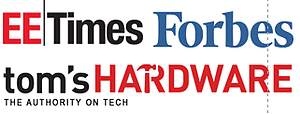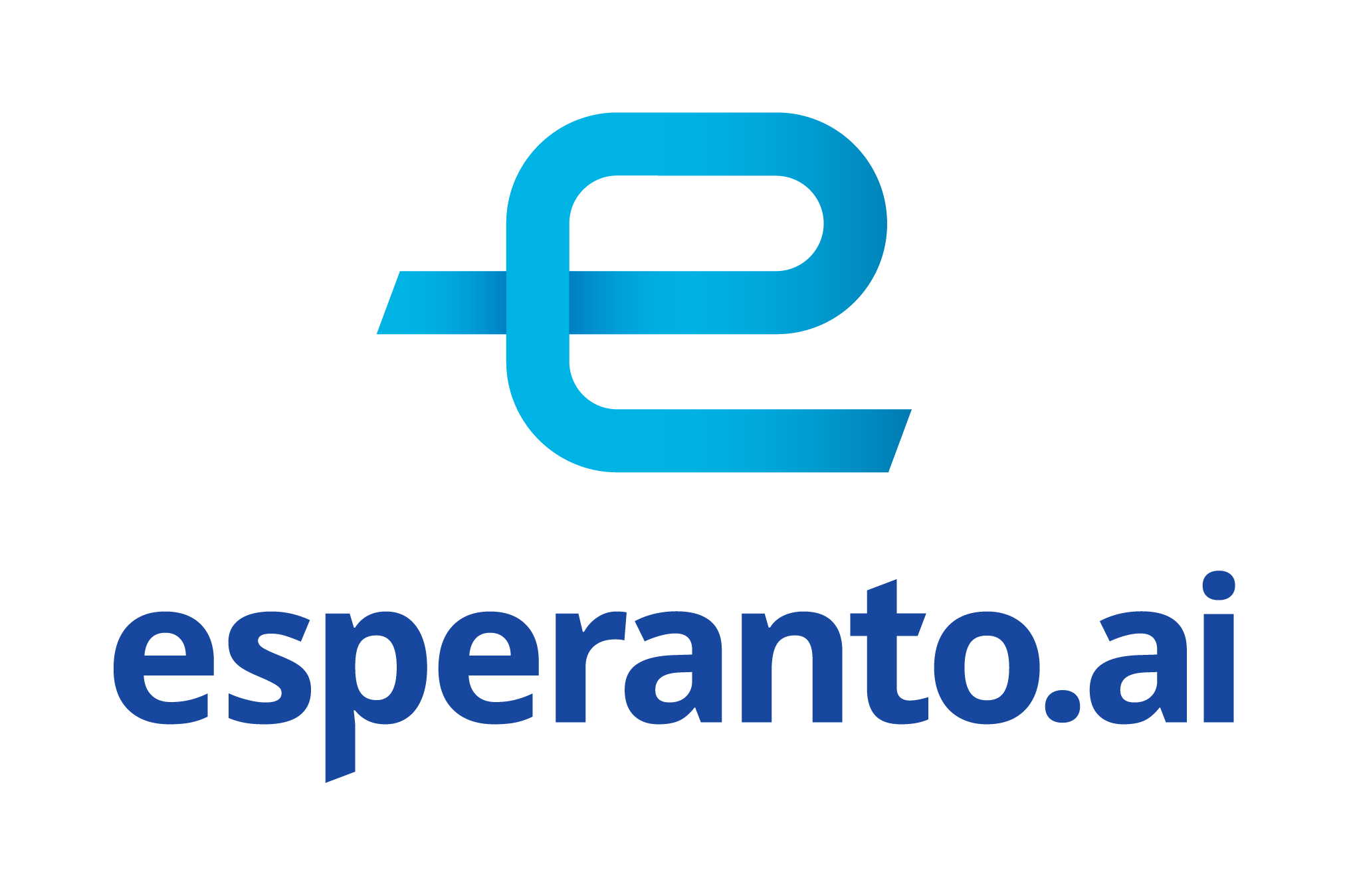7th RISC-V Workshop Proceedings
From the RISC-V Foundation.
Proceedings and a recap of the 7th RISC-V Workshop held Nov 28-30th 2017 are now available. Read more.
See the presentation by Dave Ditzel of Esperanto: Slides | Video
And follow Esperanto news!
Esperanto Technologies Plans Energy-Efficient Chips for Artificial Intelligence and Machine Learning, based on the open RISC-V standard
PRESS RELEASE
Nov. 28, 2017
News Articles
First public technology disclosure from stealth start-up at 7th RISC-V Workshop
MOUNTAIN VIEW, CALIF., Nov. 28, 2017 – Esperanto Technologies president and CEO Dave Ditzel today made the first public disclosure of Esperanto’s development of energy-efficient computing solutions for Artificial Intelligence (AI) and Machine Learning applications based on the open-standard RISC-V Instruction Set Architecture (ISA). During his presentation at the 7th RISC-V Workshop, “Industrial strength high-performance RISC-V processors for energy-efficient computing,” Ditzel unveiled the company’s plans to deliver RISC-V based computing solutions that will achieve both the highest levels of performance and energy-efficiency for artificial intelligence and machine learning applications.
“Esperanto’s goal is to make RISC-V the architecture of choice for the most demanding AI and machine learning applications which will drive computing innovation for the next decade,” said Ditzel. “By designing in leading-edge 7nm CMOS and with the simplicity of the RISC-V architecture, we can fit over four thousand full 64-bit cores each with vector accelerators on a single chip. By basing our chip on RISC-V we can take advantage of the growing software base of operating systems, compilers and applications. RISC-V is so simple and extensible that we can deliver world class TeraFlop levels of computing without needing to resort to proprietary instruction sets, thereby greatly increasing software availability.”
In his workshop presentation, Ditzel disclosed an overall technology direction for Esperanto’s first System-on-Chip designs, including:
-
Artificial Intelligence supercomputer-on-a-chip designed with leading edge 7nm CMOS
-
16 “ET-Maxion” 64-bit RISC-V cores for highest single thread performance
-
4096 “ET-Minion” energy-efficient RISC-V cores each with vector floating point unit
-
Based on the 64-bit open and free RISC-V Instruction Set Architecture
During his talk, Ditzel also noted that in addition to selling its AI supercomputer chip, the company will license its high-performance ET-Maxion and ET-Minion cores to help proliferate the RISC-V architecture.
“There is considerable industry interest in licensing the high-performance and energy-efficient cores we are developing,” noted Ditzel. “As a start-up, we are very focused on addressing our target markets with our AI chip, but we also want to help build the RISC-V ecosystem. We think that by licensing the cores we have in development, we can do both.”
Western Digital’s CTO Martin Fink announced during his keynote speech at the workshop that Western Digital had made a strategic investment in Esperanto. Western Digital’s leadership role in the RISC-V initiative is significant in that it aims to accelerate the advancement of the technology and the surrounding ecosystem by transitioning its own consumption of processors – over one billion cores per year – to RISC-V.
Esperanto’s president and CEO Dave Ditzel is well known for founding and taking public the energy-efficient processor company Transmeta, as well as his leadership work on the SPARC architecture at Sun Microsystems. Earlier in his career, Ditzel helped launch the RISC processor movement of the early 80’s when he co-authored “The Case for the Reduced Instruction Set Computer” with U.C. Berkeley computer science professor David A. Patterson. Before founding Esperanto, Ditzel spent six years at Intel leading various high-performance processor-related projects.
For more information on the RISC-V Foundation and the 7th RISC-V workshop, please visit https://riscv.org/.
Break out the Champagne!
After nearly three years in Stealth Mode, Esperanto Technologies president and CEO Dave Ditzel will make the first public disclosure of Esperanto’s planned development of high-performance, energy-efficient computing solutions based on the open standard RISC-V ISA tomorrow at the 7th RISC-V Workshop. During his presentation, “Industrial strength high-performance RISC-V processors for energy efficient computing,” Mr. Ditzel will unveil the company’s plans to deliver RISC-V based computing solutions with the performance and energy-efficiency required to address the most compute intensive applications in computing today!
For more information on the RISC-V Foundation and the 7th RISC-V workshop, please visit https://riscv.org/.

And follow Esperanto news!
Why RISC-V?
RISC-V is an open, free instruction set architecture (ISA) enabling a new era of processor innovation through open standard collaboration. Born in academia and research, the RISC-V ISA delivers a new level of free, extensible software and hardware freedom, paving the way for the next 50 years of computing design and innovation.
Unlike legacy Instruction Set Architectures such as ARM or x86, RISC-V does not carry the baggage of the past. Instead, the ISA is clean-slate design based on decades of RISC research and use. It reflects the philosophy of simplicity and elegance – an ISA that fits on a single sheet of paper instead of thousands of pages in an architecture manual. Furthermore, the RISC-V ISA provides the ability for users to extend the instruction set both in terms of optional user-defined extensions and community-driven extensions such as Vector instructions and Security.
The simplicity and elegance of the RISC-V Instruction result in SoC designs that are simpler, have fewer logic gates, consume less energy, and ultimately cost less. In a design targeted for the IoT, this enables extremely low cost, very efficient designs. For high-end applications, the simplicity of RISC-V results in the potential for higher clock speeds, exceptional overall performance and for standout efficiency in terms of Operations per Watt.
With more than seventy companies and organizations using RISC-V to innovate in processors, SoC designs, and development tools, the ISA is rapidly becoming the “innovation platform of choice.” Growing out of academic roots, the ISA is now being embodied in dozens of chip designs ranging across the performance spectrum. As the innovation continues over the next several years, RISC-V adopters will launch SoC devices that rival the performance of any x86- or ARM-based devices while being substantially better in terms of energy efficiency. New features, extensions and cores are being developed at a rapid rate.
In parallel with chip development on the RISC-V ISA, there has been a commensurate growth in development tools and ecosystem support. New tools and development techniques that don’t exist for other ISA’s are also already in use on RISC-V based designs. While the owners of legacy architectures can argue that they have mature ecosystems, RISC-V will be rapidly catching up based on the strength of the community effort. Already, the RISC-V open ISA has support from a broad range of operating systems, software vendors and tool developers.
Further evidence for the momentum of RISC-V can be seen it the growth of the RISC-V foundation. Founded in 2015, the foundation has rapidly grown to include more than 70 member companies and organizations. The bi-annual RISC-V workshops have grown from small academic conferences to standing room only major events which are over-subscribed both in terms of attendance but also in terms of technical papers submitted. In Asia, and in greater China in particular, the level of interest is beyond all expectations as there is a keen desire to escape the monopolistic practices of the existing owners of the leading ISAs. The excitement and enthusiasm are palpable and is reminiscent of the early days of the open source Linux operating system.
Given this backdrop of momentum, enthusiasm and innovation, it seems certain that the open RISC-V ISA has the potential to become the Instruction Set of choice for the new demanding applications of the connected world. Old legacy applications and ISA’s will of course remain, but over time will be supplanted by RISC-V.
And follow Esperanto news!








